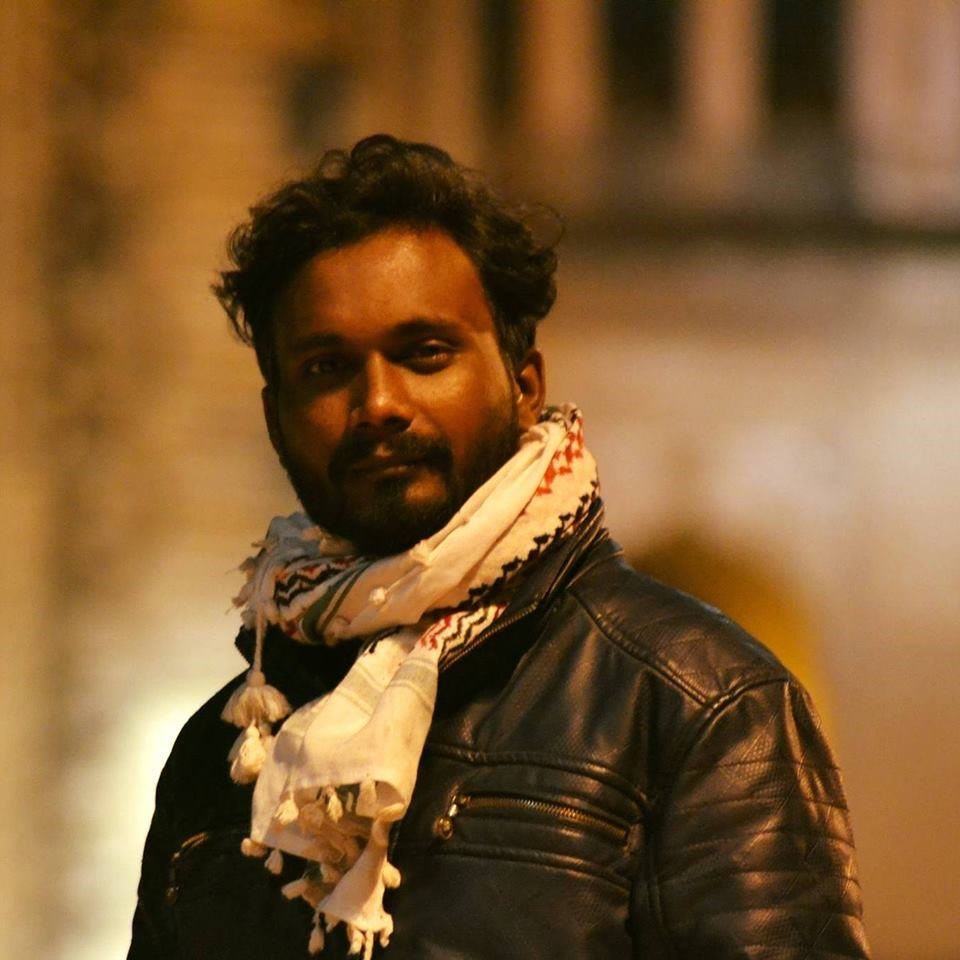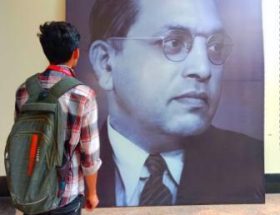Rahul Sonpimple
In my Ph.D. fieldwork in the Vidarbha region of Maharashtra, I encountered two contrasting assertions regarding the role of Buddhism in the everyday lives of Dalits. The first assertion, claiming “Buddha is our god; Babasaheb gave us, we are not Hindus,” was prevalent among poor and illiterate Dalits in slums and villages. The second assertion, emphasizing Buddhism as a way of life without deifying Buddha, was more common among educated, middle-class, and urban upwardly mobile Dalits.
Interestingly, the ritualistic practices of birth, marriage, and death ceremonies in the context of New Buddhism were predominantly found among working-class converted Dalits, while the educated and middle-class Dalits were more drawn to popular notions of Buddhism, such as meditation, self-awareness, and nirvana. These ideas seem more aligned with Western interpretations of Buddhism.
It appears that these notions of Buddhism in the present time have become central to Western forms of Buddhism. Although the educated middle class considers Buddha a guide rather than a god, there seems to be a surplus attraction to Buddha, creating a sense of divinity between these meditation practitioners and Buddha.
This trend, resembling a post-material capitalist consumption of emotional needs, is notable. In Western spiritual circles, Buddhism often serves as a post-ideological way of life without forming an organized religion or countering dominant ideologies. This consumption of Buddhism, with a focus on meditation and the fetishization of the concept of ‘self,’ has also gained popularity among upper-class caste Indians and found a respectable place in the discourse of ‘self-care’ and ‘self-love.’
Buddhism in India, portrayed as a ‘Way of Life’ rather than a religion, seems to align seamlessly with the structural dominance of upper-class caste. Its celebrated tenet of non-violence perfectly suits the interests and cognitive balance of ruling liberal elites, from political leaders to corporate figures.
Surprisingly, this popular yet passive understanding of Buddhism towards structural socio-economic and cultural change has been endorsed by the post-Ambedkar mainstream Dalit-Bahujan intelligentsia. Ambedkar, however, rejected the traditional view of Buddhism as merely a way of life and presented it as a systematic religious philosophy for reconstructing the world.
Ambedkar went beyond the spiritual mystique associated with Buddhism, reframing its fundamentals to address real questions posed by Marxism in the external world. He compared Buddha and his religion with Marx and Marxism, presenting a radical political and economic philosophy against structural inequalities and oppression.
Moreover, Ambedkar did not simply limit its distinctiveness by arguing how scientific Buddhism is compared to other religions in the world, as many scholars have interpreted, but he also presented a radical political as well as an economic philosophy of Buddhism against structural inequalities and oppression. The reason to compare Buddha and Marx, even after knowing that these two personalities are “divided by such a lengthy span of time and occupied with different fields of thought,” was also to recover Buddha from the long-standing passivity towards social-economic life/inequalities lamented by early Buddhists scholars and organizations in India and abroad. In his speech on 20th November 1956 at the conference of the World Fellowship of Buddhists in Kathmandu (Nepal), Ambedkar said:
“There is ‘Dukkha’ in the world. The word ‘Dukkha’ no doubt has been interpreted in various ways. It has been interpreted to mean rebirth, the round of life, that is ‘Dukkha.’ I do not agree with that. I think there are lots of places in the Buddha literature where the Buddha has used the word ‘Dukkha’ in the sense of poverty.”
Thus, for Ambedkar, Buddhism was not simply a religion for individuals to find happiness in life, as Dalai Lama keeps talking in his speeches and his books, but for him, Buddhism in its real sense is the religion of social act, a kind of organized force to counter and end the material and social inequalities maintained by the ruling elites.
He even saw the most popular non-violence philosophy of Buddhism misunderstood in quite dogmatic ways. For Ambedkar, the role of force to reconstruct society is an inseparable part of Buddha’s religion. Ambedkar, in this context, in his ‘Buddha or Karl Marx,’ wrote:
“The Buddha is generally associated with the doctrine of Ahimsa. That is taken to be the be-all and end-all of his teachings. Hardly anyone knows that what the Buddha taught is something very vast; far beyond Ahimsa […] The Buddha was against violence. But he was also in favor of justice, and where justice required, he permitted the use of force […] A man who fights for justice and safety cannot be accused of Ahimsa. If all the means of maintaining peace have failed, then the responsibility for Himsa falls on him who starts war.”
Therefore, Buddhism, as mentioned above for Ambedkar, stands against both the spiritual fetishism and passivity. It, however, for Ambedkar, is the religion of oppressed masses to create collective consciousness against structural oppression and to claim equality. Furthermore, this claim for equality, for Ambedkar, specifically in the context of India, is also a historical claim, as he saw the history of Indian lower caste and Brahmin-upper caste is the history of conflict between Buddhism and Brahmanism. Ambedkar, in his text ‘Revolution and Counter-Revolution,’ while detailing the history of the destruction of Buddhism by Brahmins and Brahmanism, stated that India’s history is “nothing but a history of mortal conflict between Buddhism and Brahmanism.” In this sense, he saw Buddhists, i.e., today’s lower castes, as the first ‘religious other’ for Vedic-Brahmin-Hindu ideology. Even the very practice and idea of untouchability, which makes Indian’s stratified society unique than the other stratified society in the world, Ambedkar argued was the result of contempt for earlier Buddhists and Buddhism by Brahmins. For Ambedkar, therefore, the original religion of the lower caste is Buddhism, which he argues is based on liberty, fraternity, equality. And to reclaim the glorious Buddhist past, on the contrary to the individual choice or desire to seek spiritual salvation, Ambedkar saw the importance of mass conversion into Buddhism. And to reclaim and to spread Buddhism, he emphasized the active role of monks, the organized efforts of Buddhist organizations, and seminaries, and the role of common followers. While scholars have mostly interpreted his conversion into Buddhism merely as an attempt to escape from caste Hindu oppression, Babasaheb Ambedkar posed Buddhism in direct confrontation with Hinduism.
The 22 vows that Ambedkar prescribed to his followers during the conversion ceremony at Nagpur in 1956 capture his intent to reshape Buddhism as a counterforce to the hegemonic ruling caste-class ideology and lay down a new path for lower castes to a real ‘Ghar Wapsi.’
Vows like: “I shall not consider Brahma, Vishnu, and Mahesh as God nor shall I worship them. I shall not consider Ram and Krishna as God nor shall I worship them. I shall not believe in Gouri-Ganesh and other gods and goddesses of Hindu religion nor shall I worship them. I don’t have faith in the incarnation of God. I believe that Buddha, as an incarnation of Vishnu, is false and malicious propaganda. I shall not perform shraddha, nor shall I give pind dan. I shall not practice anything that is against and different from Buddha’s dhamma. I will not perform any rituals to be performed by Brahmins. I believe that all human beings are equal.”
These vows clearly exhibit Ambedkar’s socio-political engagement with Buddhism in the form of an ideology and, more so, his (re)invention of Buddhism as a collective consciousness for lower castes-communities.
Therefore, understanding Ambedkar’s idea of ‘Prabuddh Bharat’ and translating it simply as an enlightened India renders passivity to Ambedkar’s radical Buddhism and his historical claim for lower castes’ Buddhist Rashtra-Nation.
~~~
Rahul Sonpimple has done his PhD in Dalit movement from JNU. He is also the President of the All India Independent Scheduled Castes Association.










